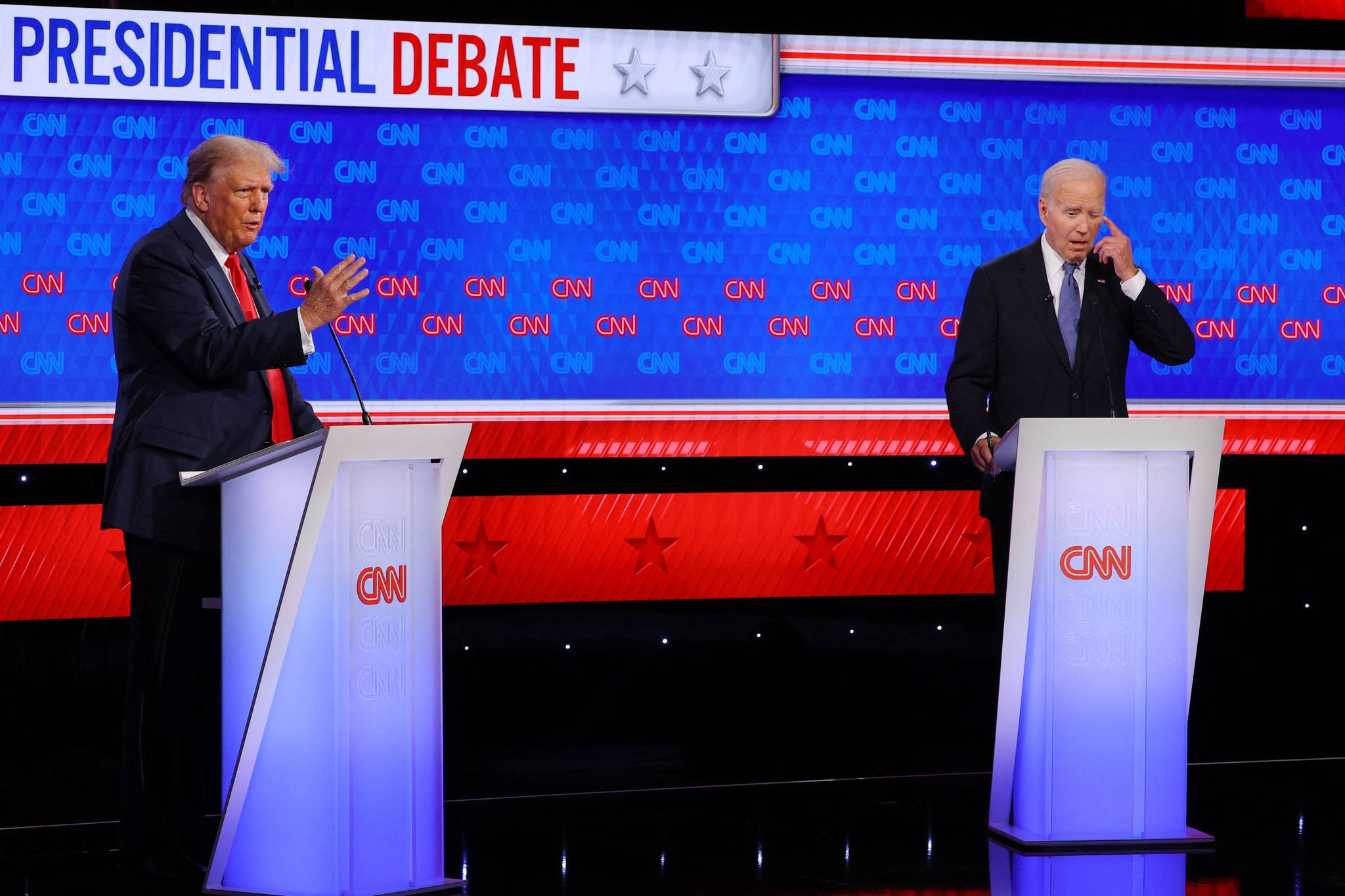By Ollus Ndomu
The Thursday US presidential debate showcased a clash of ideologies, priorities, and rhetorical strategies between the candidates, offering voters a stark contrast in leadership styles and policy visions. The debate, moderated by CNN’s Jake Tapper and Dana Bash, was structured to allow each candidate two minutes to answer a question, followed by one minute for responses, and additional time for follow-up clarifications at the moderators’ discretion.
Key Moments and Strategies
1. Immigration and Border Security:
Former President Trump highlighted his administration’s achievements in border security, claiming, “Look, we had the safest border in the history of our country.” He criticized President Biden for reversing these policies, suggesting that doing so led to increased illegal immigration. Trump’s rhetoric aimed to appeal to voters concerned about national security and immigration control.
In contrast, President Biden emphasized his administration’s efforts to manage the border humanely, stating, “Relative to what we’re going to do with more border patrol and more asylum officers.” Biden’s approach focuses on a balance between security and compassion, likely aiming to resonate with more moderate and progressive voters who prioritize human rights.
2. Economic Policies and Taxation:
Biden criticized the tax policies under the Trump administration, arguing, “If they just paid 24%, or 25%, either one of those numbers, they’d raise $500 billion in a 10-year period.” This statement underlines Biden’s commitment to ensuring the wealthy pay a fair share of taxes, addressing income inequality, and funding social programs.
Trump’s response did not directly counter Biden’s tax policy critique but pivoted to his administration’s economic successes, including pre-pandemic economic growth and tax cuts that he argues benefited the middle class.
3. Handling of the January 6 Capitol Riot:
One of the most contentious issues was the handling of the January 6 Capitol riot. Trump defended his actions, claiming, “Look, he encouraged those folks to go up in Capitol Hill.” In contrast, Biden held Trump responsible for inciting the violence, highlighting the need for accountability and protecting democratic institutions. This exchange reflects broader debates about democracy, law, and order.
4. Foreign Policy and National Security:
Biden’s foreign policy critique focused on Trump’s relationship with Russia and the handling of Ukraine, stating, “He was going to take Kyiv in five days. Remember, because he’s part of the old Soviet Union.” Biden’s comments aimed to portray Trump as weak on Russia and out of touch with contemporary geopolitical realities.
Trump, however, emphasized his administration’s military strength and support for Ukraine, attempting to cast Biden as ineffective in dealing with international threats.
5. Debate Dynamics and Rhetorical Techniques:
The debate’s format, with strict rules on speaking times and microphone control, aimed to maintain order and allow each candidate to present their points clearly. However, interruptions and accusations were frequent, with Trump stating, “He sat there for three hours,” referring to Biden’s inaction during critical moments. Biden countered by emphasizing his proactive measures and long-term strategies.
6. Health Care and Social Services:
Biden highlighted his commitment to expanding healthcare access and social services, arguing, “We’d be able to right-wipe out his debt, we’d be able to help make sure that all those things we need to do — childcare, elder care, making sure that we continue to strengthen our healthcare system.” This approach aligns with his broader vision of government as a force for social good.
Trump’s focus was more on deregulation and economic freedom, implying that government intervention should be limited to foster economic growth and individual responsibility.
Implications for the Election
The debate provided a clear illustration of the contrasting visions between the two candidates. Biden’s emphasis on progressive policies, social justice, and international alliances seeks to appeal to a coalition of moderate, progressive, and independent voters. Trump’s focus on strong borders, economic freedom, and nationalist policies aims to consolidate his base and attract undecided voters concerned about security and economic stability.
Both candidates’ performances will likely energize their respective bases. Still, the challenge remains in swaying undecided voters who are crucial in determining the election’s outcome. The debate reflected the deep ideological divides within the country, reflecting broader societal debates on the role of government, economic policy, and America’s place in the world.
Conclusion
Overall, the debate was a microcosm of the broader electoral battle. With each candidate presenting a distinct vision for America’s future, voters are faced with a clear choice. The ultimate decision will hinge on which vision they believe will better address the pressing issues of our time and lead the nation towards a more prosperous and secure future.


